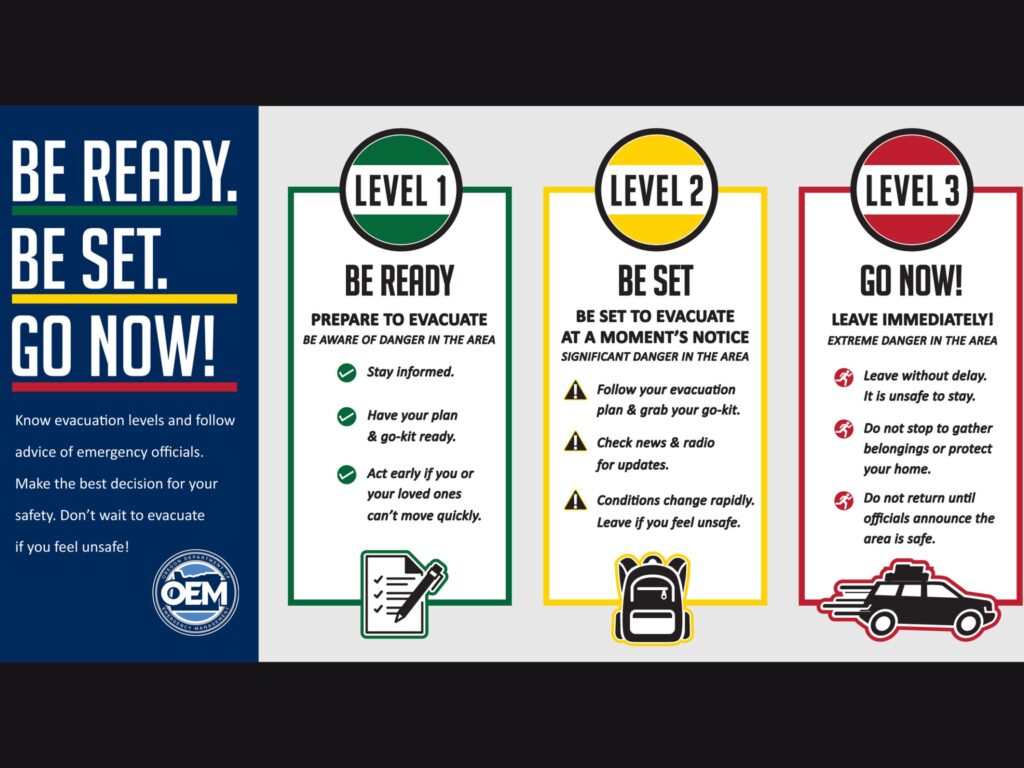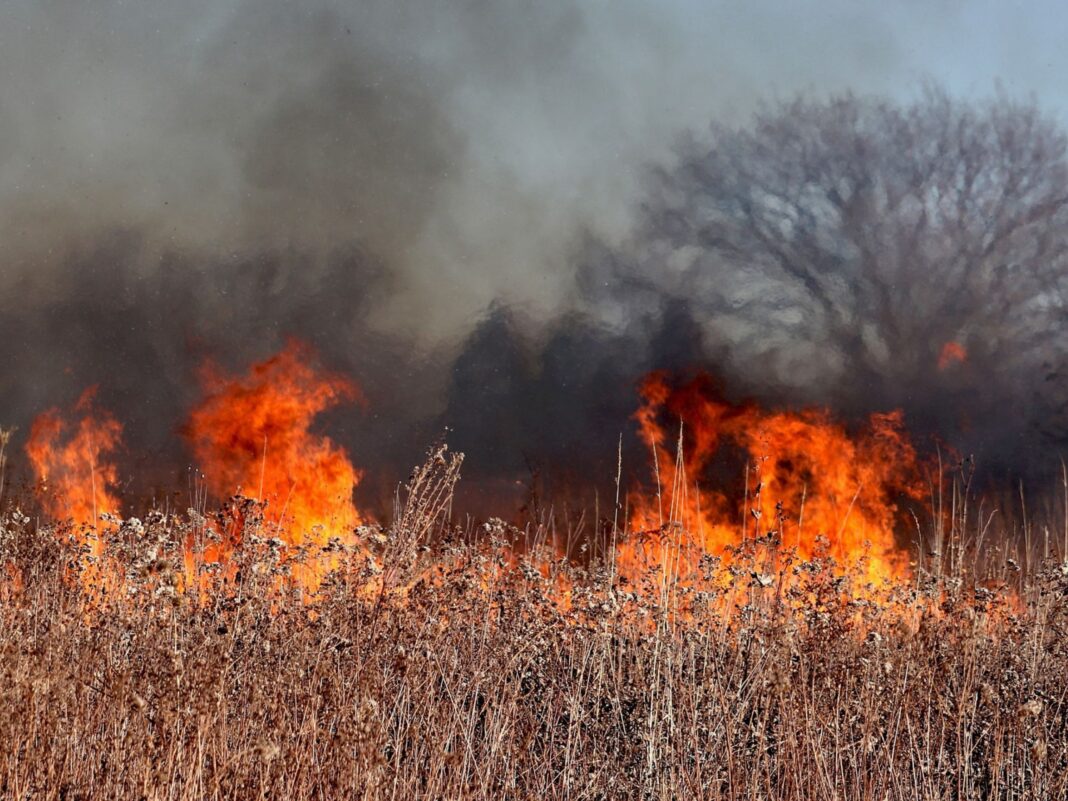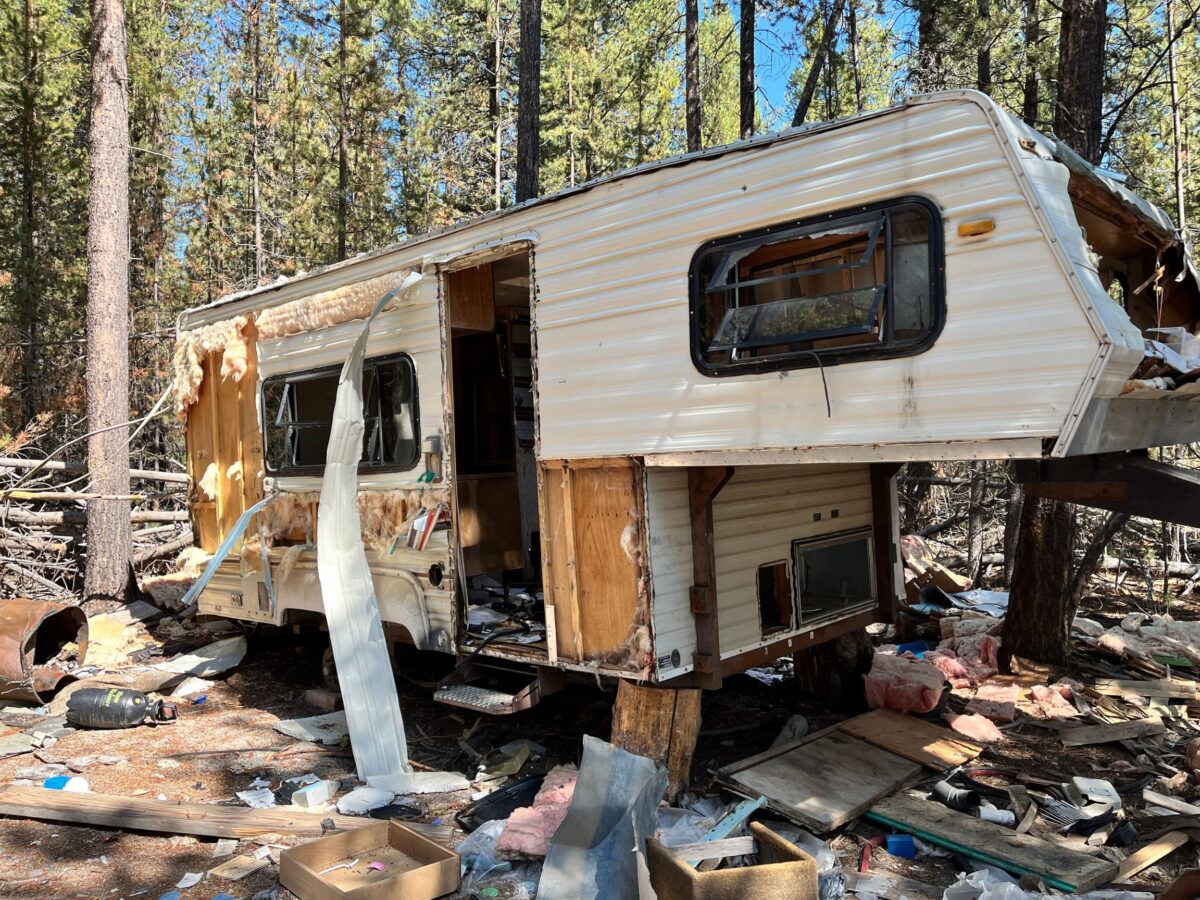May 30, 2023 – To close out Wildfire Awareness Month, the Oregon Department of Emergency Management (OEM) is urging everyone to prepare for the upcoming wildfire season by having an evacuation plan.
OEM has information and resources to help Oregonians plan for what to do before, during and after a wildfire to keep themselves, their loved ones and their communities safe. Taking simple steps to prepare today can make a big difference in being ready when an evacuation occurs.
Stay Informed
Sign up for emergency alerts to be notified when there is an evacuation. Visit ORAlert.gov to find the local alert system by city, county or zip code. People who are already registered to receive alerts should log in and confirm their contact information is updated. Also, check phone settings to ensure that wireless emergency alerts are turned on.
People should become familiar with their county emergency management website and know where to find local emergency information. Those who use social media are encouraged to follow local emergency services in their area such as the county, city, sheriff’s office and fire agency profiles.
Have a Plan
Being prepared starts with having a plan. OEM offers an evacuation checklist that can be used as a guide. Establish a communication plan with a list of important contacts and a safe place for loved ones to meet if they are separated during an emergency. Identify multiple evacuation routes from home, work or school and plan for transportation needs. Discuss the plan with loved ones, friends and neighbors and practice it so everyone knows what to do during an emergency.

People with disabilities should consider individual circumstances and specific needs when planning for evacuation, such as special equipment, transportation and service animals.
Have an evacuation plan for pets and large animals such as horses and other livestock. Prepare a pet evacuation kit in a tote bag or pet crate. Pack food, water, leashes, bedding, identification, medication and vaccination or medical records. Plan for transportation of large animals and identify sheltering options.
Make a Go-Kit
Assemble an emergency kit of essential supplies that can be grabbed in a hurry. Pack an easy-to-carry backpack or bag for each member of the household with health and safety items such as food, water, medication, flashlights, phone chargers and clothing. Visit Ready.gov or American Red Cross for recommended emergency kit items.
Evacuation Levels
Oregon follows a three-level evacuation notification system, each structured around the readiness need and threat level. Oregonians should become familiar with “Be Ready, Be Set, Go!” evacuation levels to make informed decisions when receiving evacuation notices. OEM urges people to evacuate any time they feel unsafe, as conditions can change rapidly. Individuals should always make the best decision for their safety.
• Level One (colored green on a map) means “BE READY” to evacuate. Community members should be aware of the danger in their area and stay informed. Check county, city and emergency services websites and local news for information. This is the time to pack and prepare to leave. Check with loved ones and emergency contacts. Reach out to neighbors, share information and ask for help if needed. Some people should consider leaving early if they can’t move quickly and need more time to evacuate, including older adults, families with children, people with disabilities, livestock and pet owners, and those with limited access to transportation.
• Level Two (colored yellow on a map) means “BE SET” to evacuate. This level indicates there’s significant danger in the area and community members should be prepared to leave at a moment’s notice. Voluntary evacuation at Level Two is recommended, especially if people need extra time or have livestock to move. Be prepared to relocate to a shelter or with family or friends outside of the affected area. Don’t wait for another evacuation notice if it doesn’t feel safe to stay.
• Level Three (colored red on a map) means “GO.” Leave immediately! This level indicates there’s extreme danger in the area and it’s unsafe to stay. Emergency services may not be available to offer further assistance to those who choose to stay. People should not stop to gather their belongings or make any efforts to protect their homes or shelter. Leave without delay.
Following an evacuation, people should not return to the area until public safety officials announce it’s safe.







